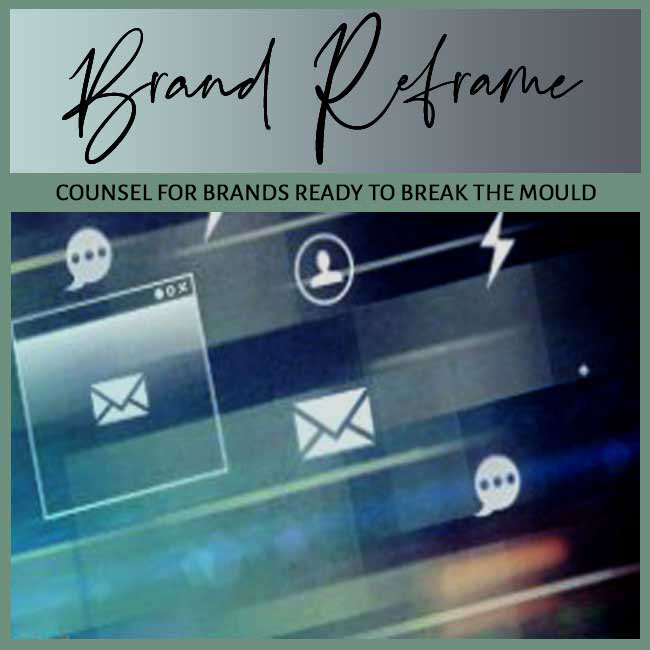
BY: SHOBHA PONNAPPA | BRAND BREAKTHROUGH STRATEGIST | 45 YEARS | 125+ CLIENTS
Brand visuals are the collection of visual elements that communicate a brand’s identity, personality, and promise. They include logos, colours, typography, imagery, patterns, and design systems across digital and physical touchpoints. Strong visuals create instant recognition and emotional connection. They help audiences understand who you are before a single word is read. When well-crafted, visuals make brands memorable and trustworthy. Visual identity turns abstract strategy into tangible presence.
In my decades as a Brand Breakthrough Strtaegist, I have seen that brand visuals are far more than decoration; they are silent messengers of positioning and quality. Every shape, shade, and style tells a story about credibility and distinctiveness. Inconsistent or outdated visuals confuse and repel audiences. Consistent, thoughtful design builds trust and sets clear expectations. Powerful visuals align internal teams around one coherent look and feel. Design clarity builds confidence both inside and outside the company.
Audiences today consume content in highly visual, fast-scrolling environments. Platforms reward striking and consistent imagery, while poor visuals disappear instantly. AI-driven search and recommendations increasingly use visual cues to identify authority. Brands without strong visuals risk invisibility even with good messaging. Visual consistency builds memory and accelerates trust. Compelling design now drives digital discoverability and influence.
A strong visual system creates compounding advantage. It speeds recognition across crowded feeds and product shelves. It makes marketing campaigns more efficient by reusing coherent assets. Investors and partners trust brands that present themselves with clarity and quality. Employees feel proud to represent a well-designed identity. Visual strength protects reputation and attracts long-term opportunity.
Every brand needs a defined visual system covering logo, colour palette, typography, and signature elements. Without a system, creative output becomes random and inconsistent. I help brands codify a flexible yet recognisable visual language tied to their strategy. This system provides rules without stifling creativity. When used consistently, it builds unmistakable presence. A clear visual system creates reliable recognition everywhere.
A strong system includes primary and secondary colour palettes for different needs. It defines typography hierarchy for digital and print clarity. It provides logo variations for different spaces while preserving impact. It also guides iconography, patterns, and graphic motifs. Teams across regions can create confidently while staying aligned. Systematic design keeps visual identity scalable and coherent.
Imagery defines mood and emotion instantly. Photography, illustration, and video styles all influence how audiences feel about your brand. I guide companies to choose authentic styles that express their promise and personality. Random stock visuals weaken credibility and emotional impact. Cohesive imagery creates deep familiarity and aspiration. Purposeful image style makes brands feel human and distinctive.
Image guidelines should cover subject matter, tone, composition, and editing approach. Portraits may emphasise warmth and diversity; product shots may convey craft or innovation. Video and motion style should match the brand’s pace and energy. Teams with clear guidance avoid mismatched or low-quality visuals. Cohesive imagery helps campaigns feel polished and credible at every touchpoint. Visual harmony builds stronger emotional memory and loyalty.
Visual systems extend into structured layouts and reusable templates. These ensure brand look and feel remain intact across presentations, social posts, and marketing materials. I help brands create scalable design kits for non-designers to use effectively. Templates save time while protecting identity. They enable consistent storytelling without endless approvals. Reusable layouts turn design into a practical everyday tool.
Templates also help maintain professionalism during rapid growth or decentralised teams. Sales decks, reports, and ads feel unified no matter who creates them. Digital asset libraries keep logos, icons, and patterns accessible and up to date. Standardised design speeds collaboration with agencies and freelancers. Over time, this efficiency reduces cost and confusion significantly. Strong systems make quality design easy and reliable for everyone.
Visuals must stay relevant without losing recognition. Markets, technology, and culture change, making periodic refresh essential. I guide brands to modernise thoughtfully while protecting core identifiers. Refresh may mean updating typography, simplifying logos, or adapting colour for accessibility. Done well, it keeps the brand current and confident. Evolution preserves strength without sacrificing memory.
Refreshing visuals requires insight and sensitivity. Listen to audience feedback and track design trends in your industry. Avoid sudden, radical changes that break trust unless rebranding fully. Introduce updates gradually with clear explanation when needed. Internal rollout and training prevent confusion among teams and partners. Thoughtful refresh keeps brands vibrant and trustworthy for decades.
Founders should invest early in defining visual identity instead of patchwork design. Too many start-ups delay and end up with inconsistent, unscalable assets. Early clarity saves money and builds trust faster. I advise starting simple but intentional with a small core system. Even basic guidelines prevent chaos as the brand grows. Early design discipline sets the tone for future success.
Authenticity is crucial; do not mimic trendy styles unrelated to your story. Build from your positioning and audience insights to choose meaningful visuals. Select colours and typography that reflect personality and promise authentically. Use photography that represents real customers and values rather than generic stock. Launch with consistent assets across website, product, and social channels. A genuine visual start builds credibility and momentum quickly.
As brands expand, visual control often weakens due to decentralised creation. Leaders must protect and evolve the system intentionally. I recommend regular audits, asset library updates, and clear design ownership. Training empowers teams to use templates and follow rules confidently. Clear governance ensures freedom without chaos. Stewardship keeps visual identity strong through growth.
Refresh visuals at planned intervals to avoid looking stale or dated. Evolve gradually rather than in panic after losing relevance. Use audience insights and cultural cues to inform updates. Communicate changes to employees and partners clearly to maintain confidence. Celebrate visual achievements to keep pride and attention high. Consistent care preserves design strength and brand equity.
One major pitfall is inconsistency from using too many uncoordinated designers or ad hoc assets. Another is focusing only on aesthetics without linking visuals to strategy. I often see brands choose trendy looks that age poorly and confuse audiences. Others ignore accessibility and lose trust with diverse users. Overcomplicated systems discourage usage and create workarounds. Visual identity fails when it is chaotic or disconnected from brand meaning.
Another mistake is delaying refresh until perception damage has occurred. Brands that refuse to evolve look dated and irrelevant quickly. Sudden overhauls without explanation alienate loyal customers. Underinvesting in templates and tools leads to sloppy execution and wasted budgets. Leadership ignoring design governance erodes long-term quality. Neglect and reactive changes weaken visual authority.
I worked with a SaaS company struggling with inconsistent visuals across platforms. We built a simple but flexible system of colours, typography, and iconography linked to its positioning. Templates and digital assets empowered non-designers to create on-brand materials. Social feeds and presentations instantly became coherent and professional. Investors reacted positively to the polished presence. A clear visual system transformed perception and attracted support.
A long-standing retail chain looked outdated to younger shoppers. I modernised its typography, simplified its logo, and refreshed colour to feel contemporary yet familiar. Photography guidelines added warmth and diversity that matched evolving audiences. Internal training helped teams embrace the change confidently. Sales rebounded as perception shifted from old-fashioned to relevant. Thoughtful visual refresh restored appeal and competitiveness.
A small consultancy lacked polish despite strong expertise. I developed a visual system featuring premium typography, subtle textures, and signature illustrations. Templates for reports and decks saved time and ensured professionalism. Marketing campaigns gained traction with a recognisable and elegant style. Clients trusted the elevated presentation as proof of quality. Strong visuals elevated credibility and positioned the brand as premium.
An EdTech company expanded rapidly but struggled with visual inconsistency across regions. I created a global design system with adaptable templates for local teams. Asset libraries ensured fast and accurate production worldwide. Guidelines addressed cultural differences while protecting brand core. Consistency improved recognition and trust across markets. A scalable visual system powered confident global growth.
A hospitality group wanted to shift from mid-market to premium. I redesigned its visual language with refined palettes, elegant typography, and immersive imagery. Marketing materials and spaces felt instantly upscale and cohesive. Employees received training to deliver on the new promise visually. Guests noticed and shared the transformed experience widely. Upgraded visuals redefined positioning and boosted perceived value.
A legacy manufacturer faced low employer brand appeal due to outdated design. I updated its visual system with modern colours, fresh photography, and bold layouts. Templates empowered recruiters and marketers to create attractive materials quickly. Digital presence became inviting and competitive for talent. Leadership embraced design as a strategic asset. Modern visuals revitalised recruitment and market image effectively.
Brand identity includes mission, values, and voice, but visuals are the tangible design elements audiences see first. Visuals make identity visible and memorable quickly. Without strong visuals, strategy stays abstract and unrecognised. Identity defines meaning; visuals deliver instant perception. Both must align for impact. Visuals are the face of the brand story.
Inconsistency, trend chasing, and ignoring strategy lead to weak visuals. Random asset creation confuses audiences and reduces trust. Overcomplication discourages use of guidelines. Poor accessibility excludes segments and harms reputation. Neglecting refresh allows competitors to appear more current. Visual chaos erodes recognition and authority fast.
Yes, when done strategically and with clear communication. I help brands audit current perception and protect core identifiers while updating. Gradual rollout avoids alienating loyal customers. Training ensures internal adoption and consistency. Transparent storytelling builds excitement for the refresh. Well-managed updates keep legacy while adding relevance.
Codify guidelines, provide templates, and maintain an accessible asset library. Train employees and partners to use visuals correctly. Assign clear ownership for updates and approvals. Audit regularly to catch drift early and correct quickly. Reward compliance and showcase on-brand creativity to inspire adoption. Systematic governance keeps visuals coherent at scale.
When audiences evolve, design trends shift, or perception feels stale or misaligned. Update before market relevance declines or crises force abrupt change. Keep recognisable elements to maintain equity while modernising details. Refresh every few years based on research and cultural insight. Avoid reactionary, rushed changes that feel desperate. Timely refresh maintains vibrancy and competitive edge.
They assess consistency, recognisability, and quality across touchpoints. Strong visuals show discipline and scalability, signalling strong management. Market recognition and media adoption of visual cues indicate equity. Design awards or expert endorsements provide additional proof. Visual coherence often reflects operational excellence. Investors trust brands with disciplined, high-quality visual systems.
Explore Brand Visuals Irrelevance … Real Cases & Fixes
Case Studies
FAQ Insights

"One BIG IDEA can turn brand stagnation into unstoppable movement. Spots are limited each week ... book your breakthrough session now."
Shobha Ponnappa
My Definitive Guides to Other Critical Branding Concepts
Smart insights, real-world frameworks, and idea-driven clarity – designed to help brands move.
Get my fortnightly Brand Reframe newsletter. Smart insights, distilled thinking, and focused momentum to help your brand lead.

Get my free AI strategy guide. Smart prompts, sharper briefs, and practical ways to make AI support your brand momentum.

Just fill in the form to join. Get my newsletter and the guide shown alongside, all with several game-changing tips.